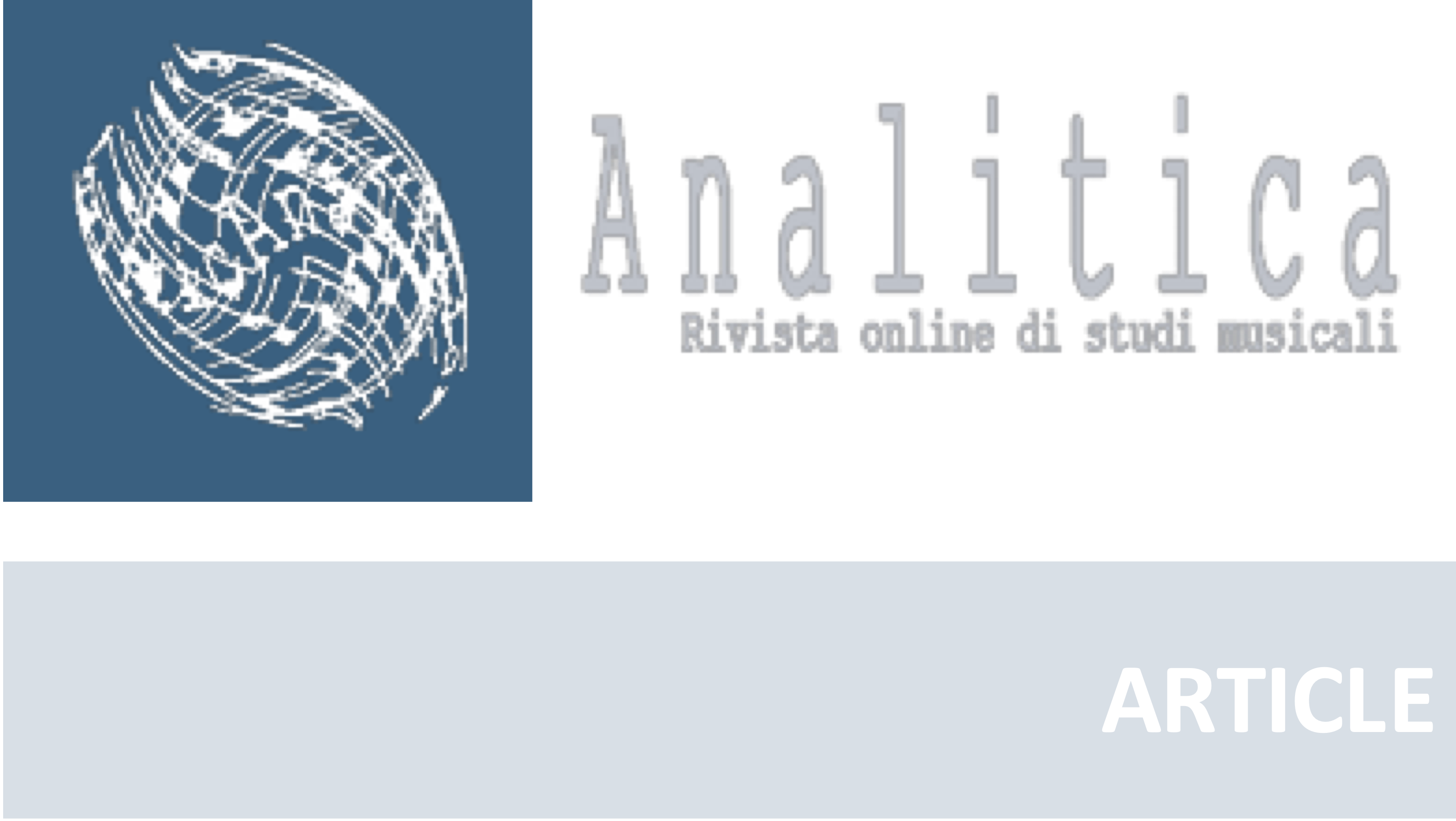Signed songs, signed music, and the Italian experience
DOI:
https://doi.org/10.5281/zenodo.13997474Parole chiave:
Deaf culture, signed song, signed music, Visual Vernacular, Italian Deaf cultureAbstract
In this article, I aim to show to hearing musicians and music students a part of the rich musical landscape of Deaf culture, with a focus on the Italian experience. I will present three different musical forms: signed songs that involve the translation of the text of a pre-existing song into sign language, signed songs that involve the composition of an original song in sign language, and signed music that has no vocal or sound components. For each of these musical forms, the article will present one or more performances by an Italian artist, in the attempt to outline its characteristics in the light of the international literature on the topic and to show the peculiarities of the Italian artistic experience, which has so far found little space in musicology and music analysis studies.
Riferimenti bibliografici
Branchini, C. & Mantovan, L. (eds.) (2020). A Grammar of Italian Sign Language (LIS). Edizioni Ca’ Foscari Digital Publishing.
Begue, J. & Cripps, J. E. (2018). The Artwork of Videoediting in Signed Music in Journal of American Sign Languages and Literatures, https://journalofasl.com/the-artwork-of-videoediting/
Celo, P. (2022). The Master of Signs - Il Maestro de i Segni. Athenaeum Edizioni Universitarie.
Chiricò, D. (2014). Diamo un segno - Per una storia della sordità. Carocci editore.
Cripps., J. & Lyonblum, E. (2017). Understanding Signed Music. Society for American Sign Language Journal, 1(1).
Cripps, J. H., Lyonblum E. & Small, A. (2022). Signed music in the deaf community: Performing The Black Drum at Festival Clin d'Oeil. Journal of Festive Studies, 4, pp. 191-215. https://doi.org/10.33823/jfs.2022.4.1.144
Del Vacchio, A. (2019). Mani Cantanti. Storia di un’idea, Fabbrica dei Segni Editore.
Fontana, S. (2013). Tradurre lingue dei segni - un’analisi multidimensionale, Mucchi editore.
Holmes, J. (2016). Singing Beyond Hearing, in Journal of the American Musicology Society, 69(2), pp. 542-548, University of California Press.
Holmes, J. (2017). Expert Listening Beyond the Limits of Hearing: Music and Deafness. Journal of the American Musicology Society, 70(1), pp. 171-220.
Jackendoff, R. (1993). Patterns in the mind. Language and human nature. Harvester Wheatsheaf.
Jowett, B. (translated by) (2012). Cratylus by Plato. Start Publishing LLC.
Ladd, P. (2003). Understanding Deaf Culture: In Search of Deafhood. Multilingual Matters Ltd.
Maler, A. (2013). Songs for Hands: Analyzing Interactions of Sign Language and Music. Music Theory Online, 19(1). https://mtosmt.org/issues/mto.13.19.1/mto.13.19.1.maler.html
Maler, A. & Komaniecki, R. (2021). Rhythmic Techniques in Deaf Hip Hop. Music Theory Online, 27(1). https://mtosmt.org/issues/mto.21.27.1/mto.21.27.1.maler.html
Manca, T. (2023). Before Sound: Re-Composing Material, Time, And Bodies in Music, Transcript Verlag.
Munday, J. (2008). Introducing Translation Studies: Theories and Applications, Routledge.
Provolo, A. (1840). Manuale per la scuola de’ sordi-muti di Verona, Coi Tipi di Paolo Libanti.
Romeo, O. (1991). Dizionario dei segni - La lingua dei segni in 1400 immagini. Zanichelli.
Sacks, O. (2007). Musicophilia: Tales of Music and the Brain. Alfred A. Knopf.
Small, C. (1998). Musicking: The Meanings of Performing and Listening. Wesleyan University Press.
Straus, J. N. (2011). Extraordinary Measures - Disability in Music. Oxford University Press.
Witcher, P. E., Cripps J. H. & Youssouf, H. (2021). Gaining insights into signed music through performers. Society for American Sign Language Journal, 5 (2), pp. 4-17
Zaghetto, A. A. (2012). Musical Visual Vernacular. How the deaf people translate the sound vibrations into the sign language: An example from Italy. Signata Annales des sémiotiques / Annals of Semiotics, 3.





